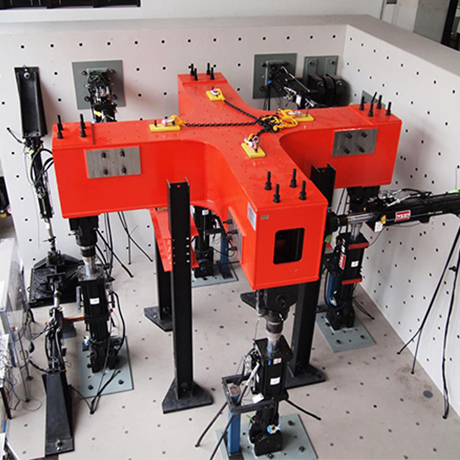Unique facility opens at Swinburne for testing built structures

In Summary
Swinburne University of Technology has developed one of the world’s most advanced hybrid simulation systems for large scale testing of civil, mechanical, aerospace and mining engineering components and systems.
Located in the new $15 million Smart Structures Laboratory in Swinburne’s Advanced Technologies Centre, it is the only facility of its type in Australia. It features transparent walls, allowing passers-by to watch researchers at work.
The Multi-Axis Substructure Testing (MAST) system provides a powerful tool for investigating the effects of extreme events on structural components such as building columns and bridge piers.
“By replicating extreme loading conditions we can deliver significant benefits to structural and earthquake engineers,” Director of the Smart Structures Laboratory, Professor Riadh Al-Mahaidi said.
Hybrid simulation is an innovative cyber-physical testing technique that combines the advantages of experimental techniques with those of online computer simulations.
“Hybrid simulation allows the physical testing of only the critical portion of the structure where the damage is expected,” Dr Javad Hashemi, who runs the hybrid testing, said.
“The rest of the structural elements – inertia and damping forces, gravity and dynamic loads and second order effects are modelled numerically in the computer.”
The components interact in real time resulting in cost-effective large-scale testing of structures subjected to extreme dynamic loading conditions generated by earthquakes, wind and ocean waves.
The MAST system simulates complex boundary effects by controlling all six degrees of freedom – vertical, lateral, longitudinal, pitch, roll and yaw. It incorporates the switched and mixed load/deformation control strategy that is critical for multi-directional loading.
The testing facility can be linked by either the internet or other methods of data transference to other facilities across the world and simultaneously test multiple experimental subassemblies.
Smart Structures Lab
The facility is available to other Australian universities and to government and industry bodies. Its research outcomes are expected to lead to the development of more efficient infrastructure systems and safer buildings, bridges, and offshore and mining structures.
The hybrid simulation testing facility has received an $870,000 Linkage, Infrastructure, Equipment and Facilities grant from the Australian Research Council, $700,000 from Swinburne and $450,000 from 11 partner universities.

